
IEP 426: Contested Natures
AWAYMAVE - The Distance Mode of MA in Values and the Environment at Lancaster University
Week 9. NANOTECHNOLOGY
| Tutor Details | Biblio | Assessment | Resources | discussion |
Introduction
If advances in genetic and bio-technologies resonate with notions of the control of life itself, nanotechnology intensifies such notions of mastery. Defined by the drive to ‘control the structure of matter', nanotechnology promises possible futures where material artefacts are built atom-by-atom from ‘the bottom up'. Nanotechnology provides the possibility for complete ubiquity of technical systems in both everyday life and natural systems. As such, nanotechnology is met similar concerns about the appropriateness of such precision and control over matter. We will explore two different ‘cultures' of nanotechnology – mastery and mimicry – which imply different relational modes between science, society and nature.
Visions of Nanotechnology
 Exercise 9.1: Please watch the two videos at:
Exercise 9.1: Please watch the two videos at:
http://www.vega.org.uk/series/tnbt/nanotechnology/ ; &
http://web.mit.edu/isn/aboutisn/isnvideo.html
The first is produced by The Vega Science Trust and provides some basic scientific back ground to nanotechnology. The second is a public relations film produced for the Institute for Soldier Nanotechnology funded by the US Army at MIT. It is perhaps more futuristic in its presentation of nanotechnology.
n the past two years, a policy and media debate about nanoscience and nanotechnologies has emerged, characterised by competing visions of promise and threat. For their advocates, nanotechnologies are seen to have huge economic and social potential, ushering in a ‘new industrial revolution' that will include breakthroughs in computer efficiency, pharmaceuticals, nerve and tissue repair, surface coatings, catalysts, sensors, materials, telecommunications and pollution control.
At the same time, ethical, social and environmental concerns which originated with dystopian fears of ‘grey goo' are rapidly taking on a sharper focus around the potential toxicity of nanoparticles and the need for tighter regulation. NGOs have criticised the vested interests that lie behind the science, and Prince Charles has raised the spectre of thalidomide in an effort to encourage a more precautionary approach .
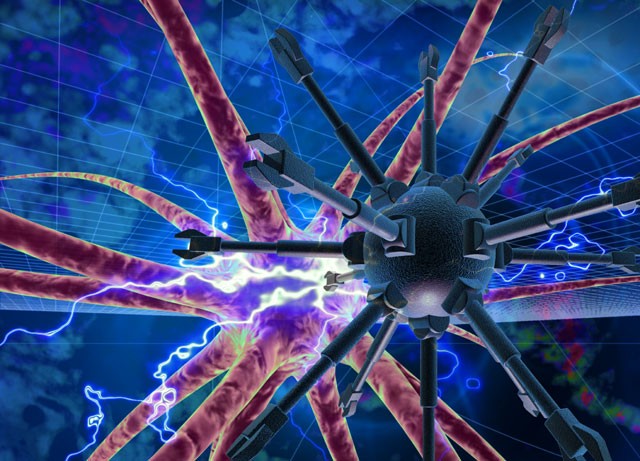 As conventionally understood, the term ‘nanotechnology' refers to the design or manipulation of structures and devices at a scale of 1 to 100 nanometres (or billionths of a metre). Yet scale is the only characteristic that unites the diverse activities and applications commonly referred to in this way. In light of this, the Royal Society suggests that we should refer to ‘nanotechnologies' in a plural form – a convention we have adopted in this proposal (Royal Society/RAE 2004).
As conventionally understood, the term ‘nanotechnology' refers to the design or manipulation of structures and devices at a scale of 1 to 100 nanometres (or billionths of a metre). Yet scale is the only characteristic that unites the diverse activities and applications commonly referred to in this way. In light of this, the Royal Society suggests that we should refer to ‘nanotechnologies' in a plural form – a convention we have adopted in this proposal (Royal Society/RAE 2004).
A crucial issue is the novelty and unpredictability of what occurs at this scale. When broken down into such small particles, the properties of materials can change in fundamental ways. Gold and silver are good examples. Normally inert and unreactive, at the nanoscale gold acts as a highly effective catalyst, and silver displays bioactive properties (Smith 2004).
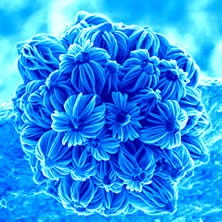 Working at this scale requires a high degree of interdisciplinarity, and nanoscience increasingly extends across a range of fields, from chemistry, physics and biology, to medicine, engineering and computer science. Yet while the term ‘nanotechnology' may be relatively new, much of the science behind it is not. Many existing chemical processes have nanoscale features, and nanotechnologies have been used to create computer chips for the past 20 years. From a social science perspective, this raises important questions about the processes through which such terminologies are being defined, contested and continually adapted in relation to external economic and political drivers.
Working at this scale requires a high degree of interdisciplinarity, and nanoscience increasingly extends across a range of fields, from chemistry, physics and biology, to medicine, engineering and computer science. Yet while the term ‘nanotechnology' may be relatively new, much of the science behind it is not. Many existing chemical processes have nanoscale features, and nanotechnologies have been used to create computer chips for the past 20 years. From a social science perspective, this raises important questions about the processes through which such terminologies are being defined, contested and continually adapted in relation to external economic and political drivers.
As an emerging field of technology, nanotechnology – which is both lauded as potentially revolutionising modern technology and as potentially dangerous – is therefore the subject of a number of complimentary and competing visions. These visions are as follows:
1. The Feynman legend
The canonical story of the origin of nanotechnology is familiar and oft told. The Nobel prize winning physicist Richard Feynman's, now famous lecture, ‘There is plenty of room at the bottom' (1959) is commonly regarded as the first public musings by a scientist about the possibilities of technology on the nano-scale (the lecture is available on the discussion site). It was short (7000 words) but challenging. Feynman asked questions like “Why can't we write the entire 24 volumes of the Encyclopedia Brittanica on the head of a pin?”, he talks about electronics and how small they could go, he talks about how the properties of a nanoscale car would differ from its road-going bigger brother (combustion of petrol in a cylinder would be pretty difficult if it was a hundred nanometers across) and he proposed a $1000 prize for the first person who could shrink the text of a page of a book down to the nanoscale. His notion, that there is no physical barrier to the extreme miniaturisation of technology, operates as a central motivating discourse around which nanotechnology operates. Indeed in subsequent controversies around what counts as ‘fact' and ‘fancy' in nanotechnology—particularly between radical and conservative imaginings of the possibilities of atomic scale technology—proponents often claim that they are simply expressing the implications of Feynman's original vision.
 One of the most used quotes from the speech is: “The principles of physics, as far as I can see, do not speak against the possibility of manoeuvring things atom by atom. It is not an attempt to violate any laws; it is something, in principle, that can be done; but in practice, it has not been done because we are too big.”
One of the most used quotes from the speech is: “The principles of physics, as far as I can see, do not speak against the possibility of manoeuvring things atom by atom. It is not an attempt to violate any laws; it is something, in principle, that can be done; but in practice, it has not been done because we are too big.”
Feynman probably wasn't the only physicist to have thought about extreme miniturisation, but there are reasons why it's Feynman's name that has stuck. Feynman has an image that almost any scientist would like. Not only is he popularly understood as having been a genius (James Gleick's biography of him is indeed called ‘Genius') he was interesting. He thought originally, he played the bongos, he hung out in clubs scribbling formulae and diagrams on the back of napkins. He also had a knack for communication, his published lectures went on to inspire the next generation of physicists. But whether Feynman is really the grandfather of nanotechnology is debateable. The talk at Caltech in December 1959 was, as far as we can tell, the only time he wrote about miniaturisation to the molecular level.
But it is Feynman's impact which is important. In particular it is the impact of his lecture on the work of Eric Drexler that is significant in the gestation of nanotechnology.
2. The Infamous Eric Drexler
For some Eric Drexler is the father of nanotechnology and for others is simply a mis-guided futurist. His ground-breaking book Engines of Creation published in 1986, Drexler and hit the spotlight in the 1990s. He was picked up in the UK in 1995 when the BBC's Horizon programme introduced the nation to nanotechnology.
Radio Times, 11 November 1995 :
How would you like your table top to turn into a steaming cup of coffee or a diamond the size of an egg? If you think this is the stuff of sci-fi films, think again. It is not a question of whether it could happen but when. Some scientists believe that within 30 years we will develop nanotechnology --- the ability to rebuild objects, atom by atom, in any form we desire.
Steve Davis's film, shown as part of the Grand Designs season of programmes, examines what these technological advances will do for us (and what they might do to us). It also finds out how engineering visionaries such as Eric Drexler plan to turn the nanotech dream into reality and confronts the possibility that this personal empowerment will bring some unpalatable choices with it.
The forward to the book was written by Marvin Minsky, co-founder of the Artificial Intelligence Lab at MIT and one of the pioneers of both robotics and AI. The book itself was based on Drexler's postgraduate thesis at MIT.
In his most well-know work, Engines of Creation: The Coming Age of Nanotechnology, Drexler outlines a Feynman-ian notion of the sheer physical possibility molecular nanotechnology technology as an alternative to modern ‘bulk technology':
Coal and diamonds, sand and computer chips, cancer and healthy tissue: throughout history, variations in the arrangement of atoms have distinguished the cheap from the cherished, the diseased from the healthy. Arranged one way, atoms make up soil, air, and water; arranged another, they make up ripe strawberries. Arranged one way, they make up homes and fresh air; arranges another, they make up ash and smoke. (p. 3)
Drexler's basic argument, for which he has been roundly criticised, is that if it possible to manipulate atoms and molecules it will be possible, one day, to build everything we need ‘from the bottom up'. Drexler also wrote a ‘serious academic' book in 1991 called Nanoengineering which he stands by still and refers people back to. He seems to have distanced himself somewhat from Engines of Creation . The attempt to write a follow up book with Christine Patterson has been put on hold and Drexler is attempting to rename molecular manufacturing (which is what he meant by nanotechnology) to zettatechnology. Zetta is the prefix for 10 21 – the number of atoms that would need to be part of a molecular machine according to Drexler.
3. The next boom
Our next vision is about nanotechnology as natural heir to the information technology (and particularly the internet technology) explosion of the 1990s. The boom had a significant impact on the US and had widespread political backing, providing a newfound optimism in technology, which translated behind the scenes to a desire to find the next big thing. Under president Clinton the US the National Nanotechnology Initiative was established through the National Science Foundation. In an early framing document entitled: The National Nanotechnology Initiative: Leading to the Next Industrial Revolution the nanotechnology is positioned as fundamentally revolutionary:
Once it is possible to control feature size, it is also possible to enhance material properties and device functions beyond those that we currently know or even consider as feasible. Reducing the dimensions of structures leads to entities, such as carbon nanotubes, quantum wires and dots, thin films, DNA-based structures, and laser emitters, which have unique properties. Such new forms of materials and devices herald a revolutionary age for science and technology, provided we can discover and fully utilize the underlying principles. (NSF 2000, 15)
Nanotechnology at the ‘next boom' is a favourite story of the venture capital community. The version they put out is that there's a race on – that the next Microsoft, Sun Microsystems or Vodafone is out there waiting to be found by clever investors. From hearing him speak, Steve Jurvetson – the VC behind Hotmail – certainly thinks that nanotech is the next big thing. One company doing quite well out of ‘the next boom' story is Zyvex whose stated aim is to create the world's first working nano-assembler. There is a distinction from the dot-com boom though, the nanotech boom looks set to take place not in balmy northern California but instead in Texas .
4. Science park salvation
There's a more mundane vision of the business benefits of nanotechnology. This is the story being told officials and ministers of the UK Department of Trade and Industry, and pushed along by engineering and manufacturing trade associations. It's the view that nanotech will not create a new Vodafone or Microsoft but instead thousands of smaller firms, each of which will provide new jobs and new products for other sectors to take advantage of.
This story sees nanotechnology as very much part of the high tech manufacturing sector, creating coatings and powders to be used in other products or processes. It's very close to the ‘micro technology' sector and part of a gradual, linear model of the technology coming to market. It is about small amounts of money and ‘business support' from the Government, the DTI's own nanotechnology strategy was called ‘New Dimensions for Manufacturing: A UK Strategy for Nanotechnology', £90 million has been promised over the next six years for the Micro and Nanotechnology Manufacturing Initiative.
There's no suggestion that nanotechnology will change the economic structure of the UK , no ‘new' economy based on nanotechnology. But it might help the UK 's ailing productivity figures.
5. An old kind of science
Nanotech has greeted by a harrumph in other quarters. Some scientists see it as simply the natural development of their own particular field. Chemists are keen to say that nanotech is just a natural progression that began with James Dalton. Biologists see it as an extension of molecular biology. Physicists see it as a little bit below them – they understand atoms, the interesting things are at a subatomic or even subnuclear level where quantum effects really start to kick in.
Nanotechnology as a term is most contested in this story over the others. There is some denial that a nanotechnology story exists at all, that the term is unhelpful, misleading and just an invention of hype.
This story is told by what could loosely be termed ‘reductionist' science, the type of science that has for centuries been our most successful method of understanding our universe but is increasingly being complimented and, in some cases superceded by a new kind of science.
6. A new kind of science
Nanotechnology is a favourite of some of the grandees of what's come to be known as complexity science. Stewart Kaufman, founder of the Santa Fe Institute in the US is one example. It's the bottom up aspect of nanotechnology that they like because for a complexity scientist, when a system is made up of autonomous agents, it's the relationships between the constituent parts of the system that are interesting, not necessarily the parts themselves. Complexity science is in some ways the opposite to reductionist science. As complexity theorist Steven Strogatz says, “After centuries of taking things apart, we're beginning to put them back together again.”
The new kind of science is in part the study of self-organisation – a theme that Michael Crichton uses to great effect in his novel Prey – in which a rouge nano-company releases a swam of self-replicating nano-bots which are able to destroy life. One school of thought says that Crichton's book doesn't scare us because what he talks about is small, but because the evil he describes self organises or ‘swarms'. This isn't an old fear; it isn't necessarily linked to nanotechnology. Swarming inspired Hitchcock to make ‘The Birds'.
For some people the ability to produce self-organising systems is the greatest opportunity of nanotechnology. But it's also the most controversial. As Crichton tells us swarms tend to ‘learn'. So in Prey, the nanoagents that have been released into the environment get better and better (or nastier and nastier) as you turn the pages. Each time the scientists outwit the nanobots, they know that the next time they will be that bit more difficult to beat.
An adjunct is self-replication, the ability of nanobots to clone themselves in order to perform tasks that small numbers of nanobots are unable to accomplish. This is where the idea of Grey Goo stems from, it's basically self replication going out of control. All of us (all living organisms) are reliant on self replication (cell division) but in the context of nanotech, self replication is getting a bad name.
7. Convergence
Nanotech is used by another group of people to make a case for technological convergence between nanotechnology, biotechnology, information and communication technologies, and cognitive sciences, to produce radical technologies for the enhancement of human capacities. Roco & Bainbridge (2002) and Bainbridge present some of these more radical possibilities as:
Examples of payoffs may include improving work efficiency and learning, enhancing individual sensory and cognitive capabilities, revolutionary changes in healthcare, improving both individual and group creativity, highly effective communication techniques including brain-to-brain interaction, perfecting human-machine-interfaces including neuromorphic engineering, sustainable and ‘intelligent' environments including neuro-ergonomics, enhancing human capabilities for defence purposes, reaching sustainable development using NBIC tools, and ameliorating the physical and cognitive decline that is common to the aging mind. (p. ix)
Though on the speculative fringe of scientific endeavour, notions of radical human enhancement and even the possibilities for immortality, enabled by nanotechnology, exercise a significant discursive role in the field. For example, in this domain, cryopreservation is currently being engaged until speculated advances nanotechnology that enable molecular repair and revivification:
Cryonicists share [the] desire to enhance cerebral performance and longevity through the application of radical new technologies. As representatives of various cryonic organizations suggest, cryopreservation is primarily a tool for preventing bodily decay until new techniques for molecular level repair and enhancement, such as nanotechnology and cloning, mature. It is envisaged that these technologies may then be employed not only to renovate, but also to augment the existing faculties of the subject, completing the project of age-reversal and life extension. (Parry, 2004, 394)
It is also this possibility of radical convergence and its possible uses in human enhancement that have exercised a number of concerns about nanotechnology. For example in his well know article for Wired – Why The Future Doesn't Need Us (available at: http://www.wired.com/wired/archive/8.04/joy.html ) – Bill Joy uses this grouping. Joy expresses the concern that nanotechnology may prodive the basic physical knowledge that, when combined with advances in other fields, may lead to forms of technology where humanity is ‘engineered our of existence'. He states that:
Our most powerful 21st-century technologies - robotics, genetic engineering, and nanotech - are threatening to make humans an endangered species.
Please read Chapter Two of Eric Drexler's Engines of Creation: the Coming Era of Nanotechnology. Available on the MAVE discussion site.
Mechanistic Nanotechnology
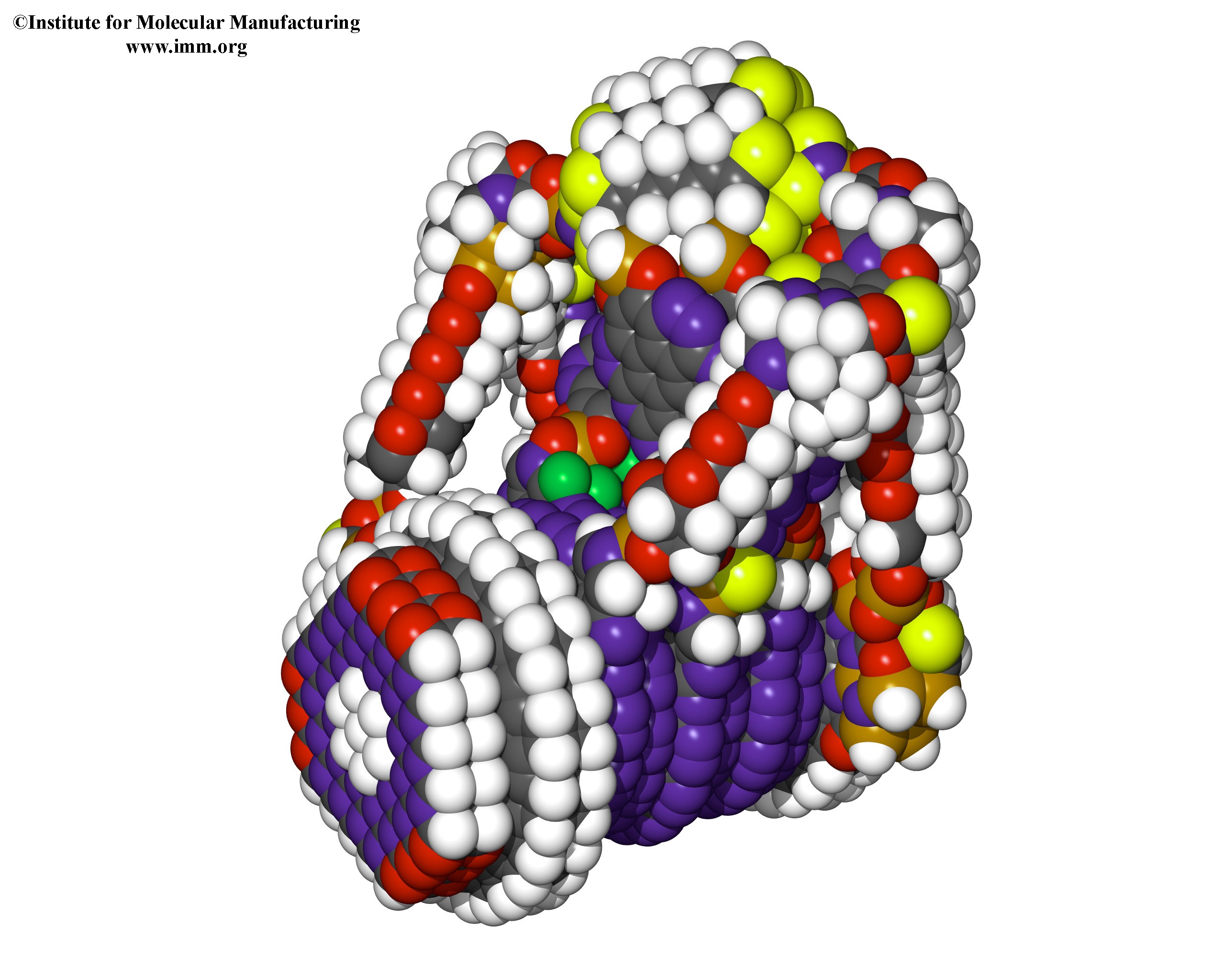 For Drexler nanotechnology represents a mode through which life may be understood physically. For Drexler all things, both organic and inorganic, are simply a collection of atoms and molecules. In this sense Drexler's determinism is fundamentally physicalist. Whereas for genetic determinism it is assumes that life forms are determined by the process of heredity for Drexler life itself is determined by its physical constitution. The only difference between material objects is the alternative arrangements that such atoms take. Indeed, the radical possibility that Drexler presents is: that when control over the structure of matter is achieved the potential arrangement of atoms and molecules would be almost limitless.
For Drexler nanotechnology represents a mode through which life may be understood physically. For Drexler all things, both organic and inorganic, are simply a collection of atoms and molecules. In this sense Drexler's determinism is fundamentally physicalist. Whereas for genetic determinism it is assumes that life forms are determined by the process of heredity for Drexler life itself is determined by its physical constitution. The only difference between material objects is the alternative arrangements that such atoms take. Indeed, the radical possibility that Drexler presents is: that when control over the structure of matter is achieved the potential arrangement of atoms and molecules would be almost limitless.
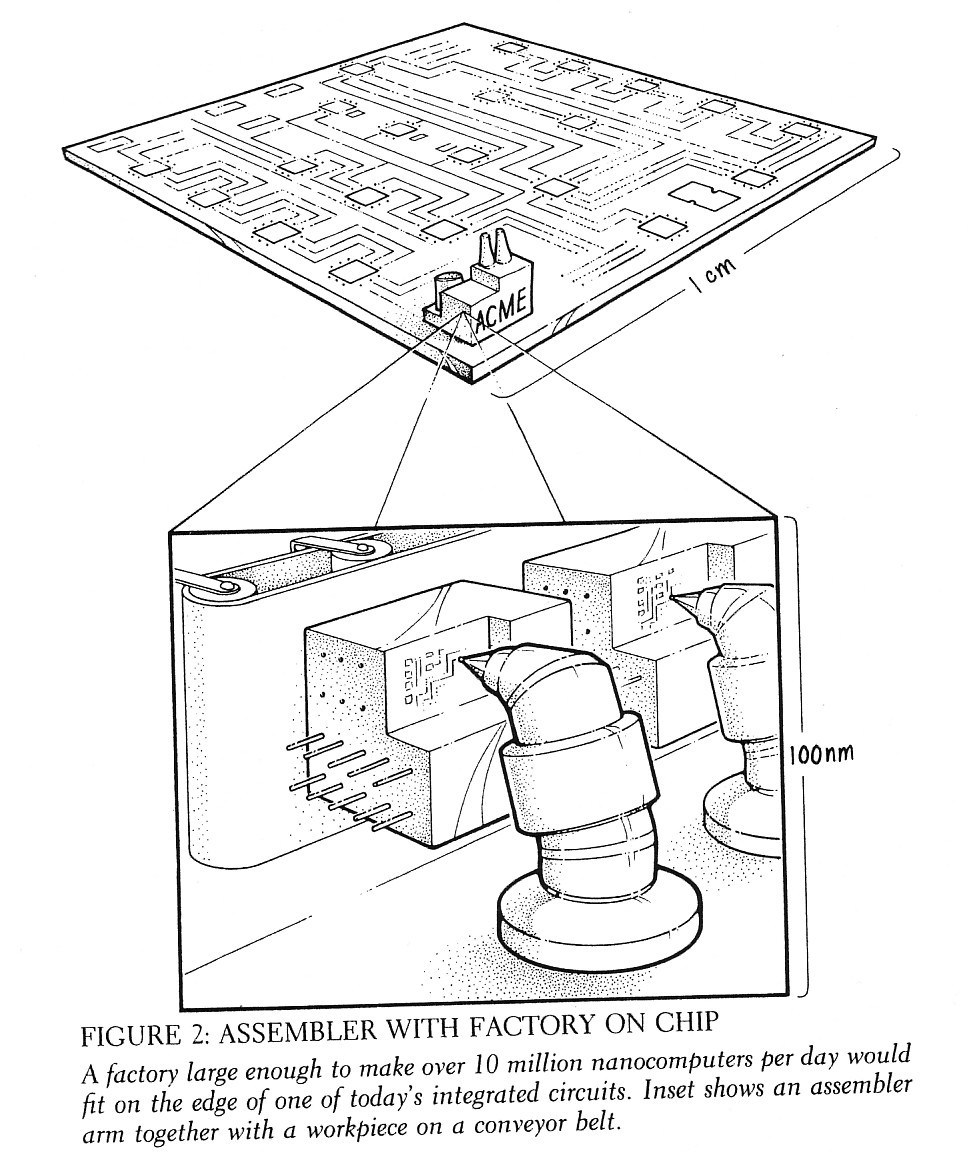
The diagrammes show Drexler's ideas for a nono-scale factories and working cogs and gears.
The roots of this physicalist determinism at Schrödinger's essay What is Life? The Physical Aspect of the Living Cell (available on the MAVE discussion site). Schrödinger asked:
How can events in space and time which take place within the spatial boundary of a living organism be accounted for by physics and chemistry? (p. 3)
To which he gave the following answer:
The most essential part of a living cell – the chromosome fibre—may suitably be call an a periodic crystal. (p. 21)
Schrödinger signals the fundamental idea that living cells are physical —that they are composed by physical elements, atoms and aperiodic crystals—and as such can be conceptualised in physics and chemistry as well as biology. The notion, articulated by proponents of nanotechnology, that such technology maybe able to cure diseases, remedy pollution and create clean energy relies on this most basic premise of the atomic physicality of ‘life'.
There is a rich double meaning to Schrödinger's essay What is Life . Schrödinger's essay is irreducibly vitalistic. He is interested in life – in the physics of life. In one sense this life is about the physicality of life, its material and atomic bases, yet in another it is about a certain physical life or liveliness of matter. Schrödinger introduces a notion of the vital life of the atomic. Schrödinger captures the movement, variation and digression of the material at atomic and molecular scales. Crandall (1996) captures Schrödinger's move in his vision of nanotechnology:
This bumbling, stumbling dance allows molecules all possible ‘mating configurations with the other molecules in their local environment. By variously constraining and controlling the chaos of such wild interactions, biological systems generate the event we call life. (p. 5)
For Drexler and Crandall, the technical limits of nanotechnology are ‘set' by the nature and being of atomic scale matter (its ontological status). At the core of the Drexlerian vision, as expressed by Crandall, is a notion of control. If the ‘event we call life' is generated by the ‘wild interactions' of particles at the nanoscale the broad goal of fundamental nanoscale research must be toward achieving control over these interactions, so that they may be directed in desired ways. As such the Drexlarian vision of the possibilities for self-replicating nano-scale robots has thus become a programmatic definition of nanotechnology as the ‘total (or near total) control over the structure of matter' (Dinkelacker quoted in Wood et al 2003, 26). For example, the Foresight Institute, formed by Eric Drexler in the 1980s, defines molecular manufacture as:
[the] ability to build things from the molecule up, and [the] ability to rearrange matter with atomic precision. This technology does not yet exist; but once it does, we should have a thorough and inexpensive system for controlling of the structure of matter. (Foresight Institute, 2005).
This definition of nanotechnology, and particularly its vision of total control over the structure of matter, is regarded by many as a misrepresentation of the technical possibilities at the nano-scale. More limited visions and definitions are often used to present a more provisional understanding of what is possible. However, in interviews conducted for current research, being carried out at IEPPP, the rhetorical claim that nanotechnology is defined by ‘the control over the structure of matter' was a re-occurring definition in a number of interviews. For example, Professor Nadrian Seeman stated that:
Our real goal here is the control of the structure of matter in 3D, to the finest extent possible. … I want this thing to be in this place, relative to other things. And I want it to perform in this fashion over time. (Interview with Nadrian Seeman, 12 April 2005 )
Drexler's imagination of nanotechnology is, at heart, a mechanical vision. Though constructing nanotechnology as radically different from contemporary ‘bulk technology' his vision is of forms of machinery – cogs, gears, engines, even factories – at the nanoscale, building bulk components from the atom up. He terms such devices ‘assemblers', nanoscale devices that are able to move, control and position atoms with the precision necessary to build atomic structures. Indeed, to accomplish such a mamouth task, he also imagines a class of self-replicating assemblers, which would be able to recreate themselves. Though a radical vision of ‘bottom up' manufacture, his understanding of nanotechnology is not functionally different from contemporary industrial or engineering processes. He simply imagines modes through which such macro-scale engineering precision may be brought to bear upon a finer atomic scale. For example, Crandall (1996) expresses Drexlers radical vision of in exactly such mechanical terms:
The goal of molecular nanotechnology is the construction of general-purpose assemblers able to build molecular structures with any conceivable configuration—given the necessary instructions and assuming the structure is chemically stable. (p. 16)
For Crandall the promise of nanotechnology is of a technology of molecular construction. Building upon enhancements in the characterisation of atomic structures and the precision with which these structures may be controlled Crandall positions nanotechnology as the ability to create nano-scale machines and to construct material objects from the bottom up, through the precise alignment of sub-molecular materials. This is a radical transformation of technology—invisible devices that potentially transform contemporary society, ensuring the total integration of biological and IT systems and the promise of form unhindered molecular engineering.
Please read: Chapters 5 & 6 of Richard Jones' Soft Machines: Nanotechnology and Life , available on the MAVE discussion site.
Bionanotechnology
In re-interrogating the claims of radical nanotechnologists such as Drexler Jones (2004) takes this mimetic, or emulatory, argument as signalling both the absolute possibility of nanotechnology molecular machines and the necessity of thinking this radical vision outside the rigidity of mechanical construction of Drexler. He states:
The visionaries of radical nanotechnology have one unbeatable argument with which to respond to the scepticism of scientists and others. A radical nanotechnology must be possible in principle, because we are here. Biology itself provides a fully-worked-out example of a functioning nanotechnology, with its molecular machines and precise, molecule by molecule, chemical syntheses. What is a bacteria if not a self replicating, nanoscale robot? Yet the engineering approach that radical nanotechnologists have proposed to make artificial nanoscale robots is very different to the approach taken by life. Where biology os soft, wet and floppy, the structures that radical nanotechnology envisions are hard and rigid. (p. 2)
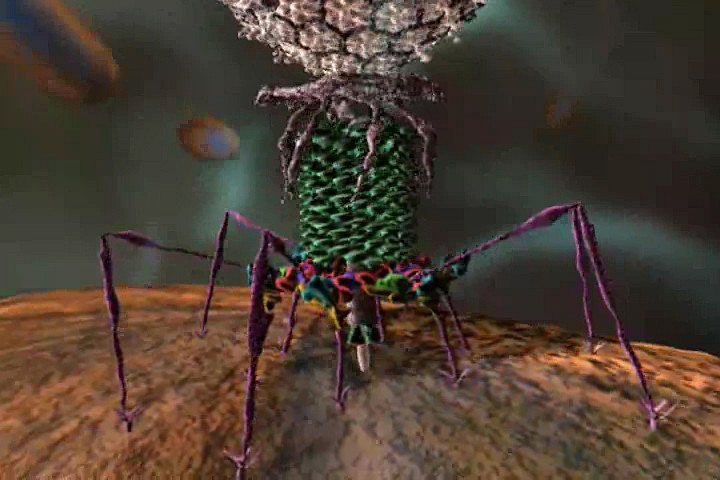
The image is to show the motion of a T4 virus, a model that is being used in bionanotechnology.
Rather than imagine nanotechnology as a set of mechanical interventions at the nanoscale Jones (2004) presents a vision of nanotechnology that it modelled on naturally occurring biological systems. For Jones, naturally occurring ‘molecular assemblages' such as protein and DNA represent a functional equivalent of self-assembling and self-organising molecular machines. Jones' is that biological systems present functioning models through which more purposeful nanotechnological interventions may be made. For Jones bionanotechnology is a route through which applications at the nanoscale may be achieved. Though working to an expectation horizon of greater than ten years, research in this area is expected to revolutionise nano-scale fabrication techniques, with the focus on bottom-up growth of nanostructures. The recent Royal Society/Royal Academy of Engineers Report Nanoscience and Nanotechnologies: Opportunities and Uncertainties outlined this possibility:
By using nanofabrication techniques and processes of molecular self-assembly, bio-nanotechnology allows the production of materials and devices including tissue and cellular engineering scaffolds, molecular motors, and biomolecules for sensor, drug delivery and mechanical applications. (p.20)
In this sense bionanotechnology may be viewed as a set of fundamental knowledges, techniques and approaches that enable envisioned applications within nanotechnology more generally. Whilst the overall goal of much nanotechnology research is in the characterisation, production and manipulation of nanostructures for non-biological applications (for example, improved data-storage) it is envisaged that bionanotechnology presents one of the most promising routes through which such applications may be achieved.
Whilst regarded as a distinct research domain within nanotechnology generally, Jones' vision of bionanotechnology also re-invigorates thinking about the radical possibilities of nanotechnology, first introduced by Drexler. Jones, maintains that notion the nanoscale machines are both technically possible and a desirable route through which wide technical advances may be made, but suggests that the current ‘engineering approach' may well prove unrealistic. Instead, he adopts a bio-mimetic approach, suggesting that the creation of molecular machines, necessary to fulfil the radical vision of ‘bottom up' manufacture' may be created by copying nature, of emulating existing self-replicating systems such as protein and DNA (see Figs 3 & 4). Similaryly Seeman & Belcher (2002) outline this aims of ‘emulating biology' by re-creating self-assembling systems:
A key property of biological nanostructures is molecular recognition, leading to self-assembly and the templating of atomic and molecular structures. For example, it is well known that two complementary strands of DNA will pair to form a double helix. DNA illustrates two features of self-assembly. The molecules have a strong affinity for each other and they form a predictable structure when they associate. Those who wish to create defined nanostructures would like to develop systems that emulate this behaviour. Thus, rather than milling down from the macroscopic level, using tools of greater and greater precision (and probably cost), they would like to build nanoconstructs from the bottom up, starting with chemical systems. (p. 6451)
In thinking through what a political and ethical engagement with this vision of bionanotechnology might look like there are two related issues to conceptualise: autonomy and bio-mimicry. The aim of Jones' conception of bionanotechnology is the construction of what he terms ‘soft machines'. That is to achieve the radical possibility of autonomous molecular machines through emulating or mimicking existing self-organising and self-replicating biological systems. Such notions of autonomy and mimicry are not new to nanotechnology. They have a long history in ubiquitous computing, artificial intelligence and robotics. However, when combined, at the nanoscale, proponents suggest that such intelligently designed biological machines herald the promise of absolute mastery and control in the production of material artefacts and the simultaneous possibility of mechanical ubiquity beyond human detection.
 Think: How does ‘nature' operate differently in the accounts of nanotechnology given by both Eric Drexler and Richard Jones?
Think: How does ‘nature' operate differently in the accounts of nanotechnology given by both Eric Drexler and Richard Jones?
Please read: Schmidt, J.C.: 2004, ‘Unbounded Technologies: Working Through Technological Reductionism of Nanotechnology', in: D. Baird, A. Nordmann & J. Schummer (eds.), Discovering the Nanoscale , Amsterdam : IOS Press, pp. 35-50. and Nordmann, A.: 2004, ‘Molecular Disjunctions: Staking Claims at the Nanoscale', in: D. Baird, A. Nordmann & J. Schummer (eds.), Discovering the Nanoscale , Amsterdam : IOS Press, pp. 51-62. Both of which are available on the MAVE discussion site.
 Think through the ways in which these papers help to conceptualise the social and ethical implications of nanotechnology.
Think through the ways in which these papers help to conceptualise the social and ethical implications of nanotechnology.
Web notes by Mathew Kearnes June 2005
| Tutor Details | Biblio | Assessment | Resources | discussion |